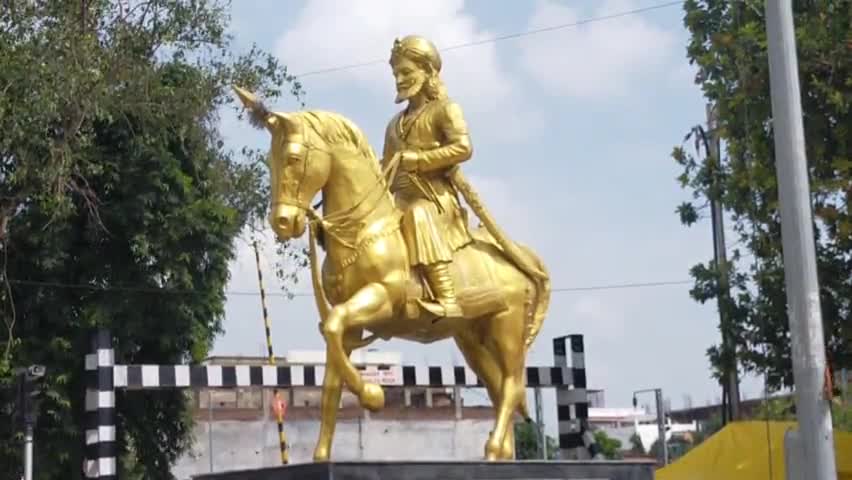
Our History
The famous city of Raebareli has been known for its cultural heritage from the beginning of time. The most ancient human footprints could be drawn back to “Bhars” who ruled the land majorly in 13th century. During the medieval period the area which is Raebareli today formed a part of “Avadh” or “Sooba of Avadh” province. In north it spreads from the foothills of Himalayas and in South it ends at Gangetic plains of the "Vatsa" country.
The very famous Malik Mohammed Jaisi, whose compositions are immemorial and superlative belonged to Raebareli. The famous “Jaisi Smarak” is an existing evidence of the unforgettable work of this poet who wrote most of his compositions during the reign of Sher Shah Suri. Yet another renowned Hindi writer, Surya Kant Tripathi Nirala, emerged from this land. He wrote most of his stories in Dalmau. The “Niral Memorial Institute” is built on his name at Dalmau.
Bhars were lately displaced by Rajputs and this district of Raebareli was ruled in parts by several small rulers thereafter. The south western part of Raebareli district was governed by Rajputs, however, Kanpurias and Amethias dominated in North and East. It was during the reign of Delhi Sultans that these subparts merged as a whole to form one kingdom. The present district of Raebareli formed a part of the “Sooba of Allahabad” constituency during the ruling session of great emperor Akbar. Eventually, in year 1858 British - East India Company named and constituted Raebareli as an independent district of modern India.The highly spirited people of Raebareli have fought courageously for the freedom of India from British stronghold. People faced arrests, assault and imprisonment bravely and did not hesitate to start individual Satyagrah way ahead of the commencement of massive Satyagrah Movement.
The district of Raebareli, which was created by the British in 1858, is named after its headquarters town. Tradition has it that the town was founded by the Bhars and was known as Bharauli or Barauli which in course of time got corrupted into Bareli. The prefix, Rae, is said to be a corruption of Rahi, a village 5km. west of the town. It is also said that the prefix, Rae, represents Rae, the common title of the Kayasths who were masters of the town for a considerable period of time. Since about the begining of the media level period of indian history the region in the south of which the area covered by the district of Raebareli lies has been known as avadh or subhah of avadh. In the north it streched as far as the foothills of the Himmalays and in the south as far as the Ganga beyond which lay the Vatsa country. There is no doubt that the district has been civilised and settled life since very early times. The Quit India movement was inagurated on August 8, 1942 and the district did not lag behind any others. Again there was mass arrests, imposition of collective fines, lathi charges and police firing. At Sareni the police opened fire at an agitated crowed, killing and maiming many. The people of this district enthusiastically respond to the call of individual Satyagragha and large numbers courted arrest. At last, on August 15,1947, the country shook off the foreign yoke and achieved its long-awaited independence. Raebareli celeberated the event with benefiting glee and rejoicing in every home along with the rest of the country.Immortal hero of first freedom struggle, Rana Beni Madhav Singh was from this region. Who is still remembered by the habitants of Raebareli in the form of District Hospital which is named after him.KISSAN ANDOLAN of 1920-21 is written in the Golden letters in the history of INDIAN NATIONAL MOVEMENT.Baba Ram Chandra came Raebareli in October 1920 and established Kisan Sabha in Rasoolpur(Salon) and Arkha(Unchahar). In Civil Disobedience Movement of 1930 Raebareli was the first in U.P. to give a lead to NAMAK SATYAGRAGH. This region was the karmbhumi of BABA RAM CHANDRA, PANDIT MOTILAL, JAWAHAR LAL, RAFI AHMED KIDWAI, DR. RAM MANOHAR LOHIYA, FEROZ GANDHI, SMT. INDIRA GANDHI, RAJEEV GANDHI & RAJ NARAYAN.
During the British Rule, farmers of the district protested strongly against their representative rule and held meetings at different places throughout the district. Baba Ram Chander, the leader of agitations formed ‘Kissan Sabha’ on November 5th of 1920 at Rasoolpur’ and Atarwa villages in Unchahar RaeBareilli. Hardly within a period of one month, of its formation ‘Kissan Sabha’ started taking active part in the form of agitation. Amol Sharma and Baba Jankidas, being the leaders of that agitation, were arrested by the administrative authorities. The rumour of their assassination agitated farmers and this rumour added fuel to the fire of agitation and farmers became violent. Their entry in the city was prohibited. On hearing about loot, robbery and violence in the district, Pt. Jawahar Lal Nehru visited there on the 7th day of January, 1921. A follower of the British Rule Veer Pal Singh, all of sudden opened fire and shot three rounds on a man Badlu Bedia of ‘Bhord’ at the bridge on river ‘Sai’ in Munshiganj. In the meantime, hearing the noise of gun-shots, the army of horse-riders assumed it to be a firing order and opened firing ruthlessly on the farmers resulting in a mass killing of the farmers. On the government records the death toll was recorded as nominal but as per the evidences of eyewitness, a press reporter, Ganesh Shankar Vidyarthi of the news-paper ‘Pratap’ published the death toll in hundreds and termed the incidence as the ‘Jalian wala Bagh Kand’. Hence, in the memory of the martyrs of that day, the 7th January, 1921, a memorial was erected in Munshiganj and since then ‘Martyrs Day’ is observed every year on the same date.
Leave a Comment